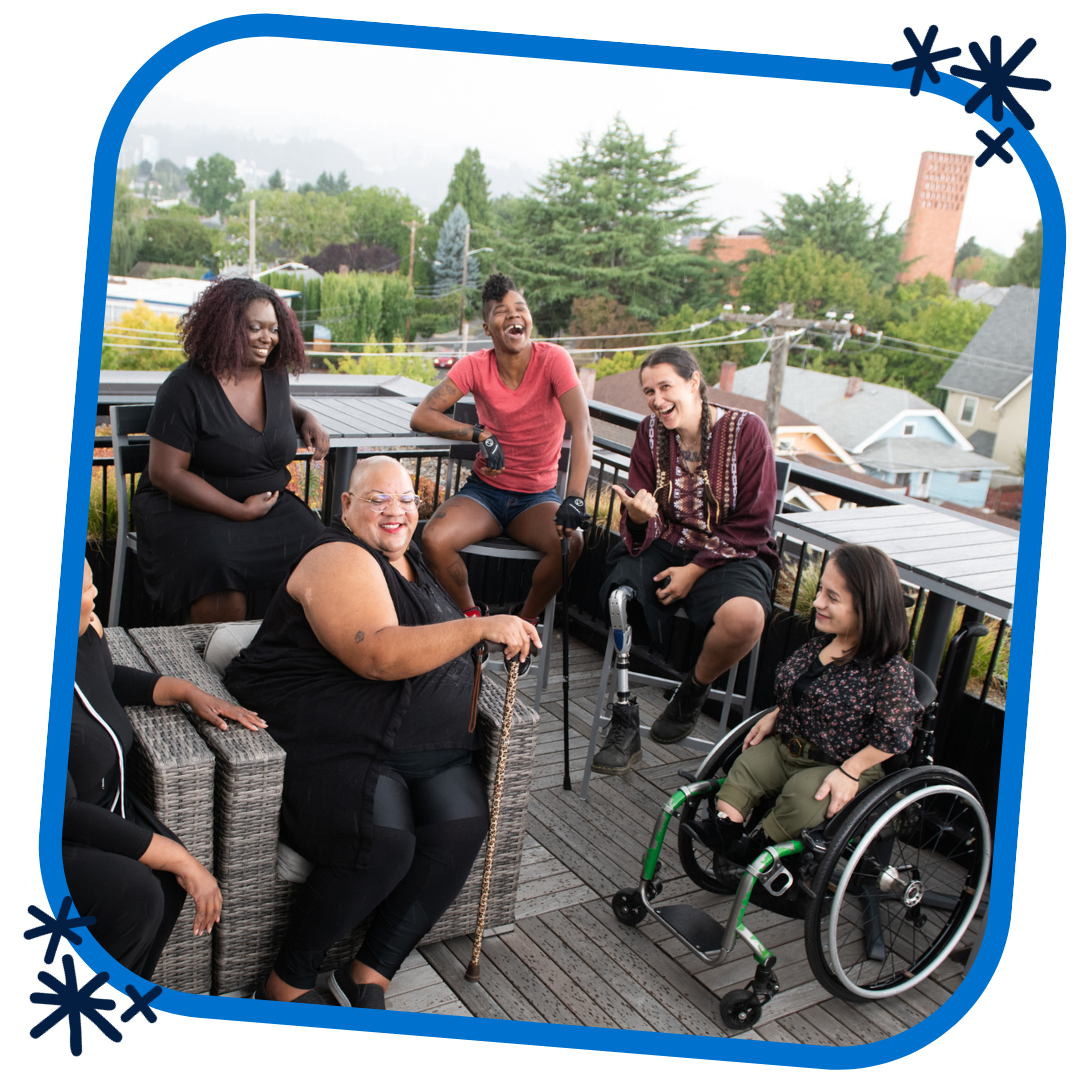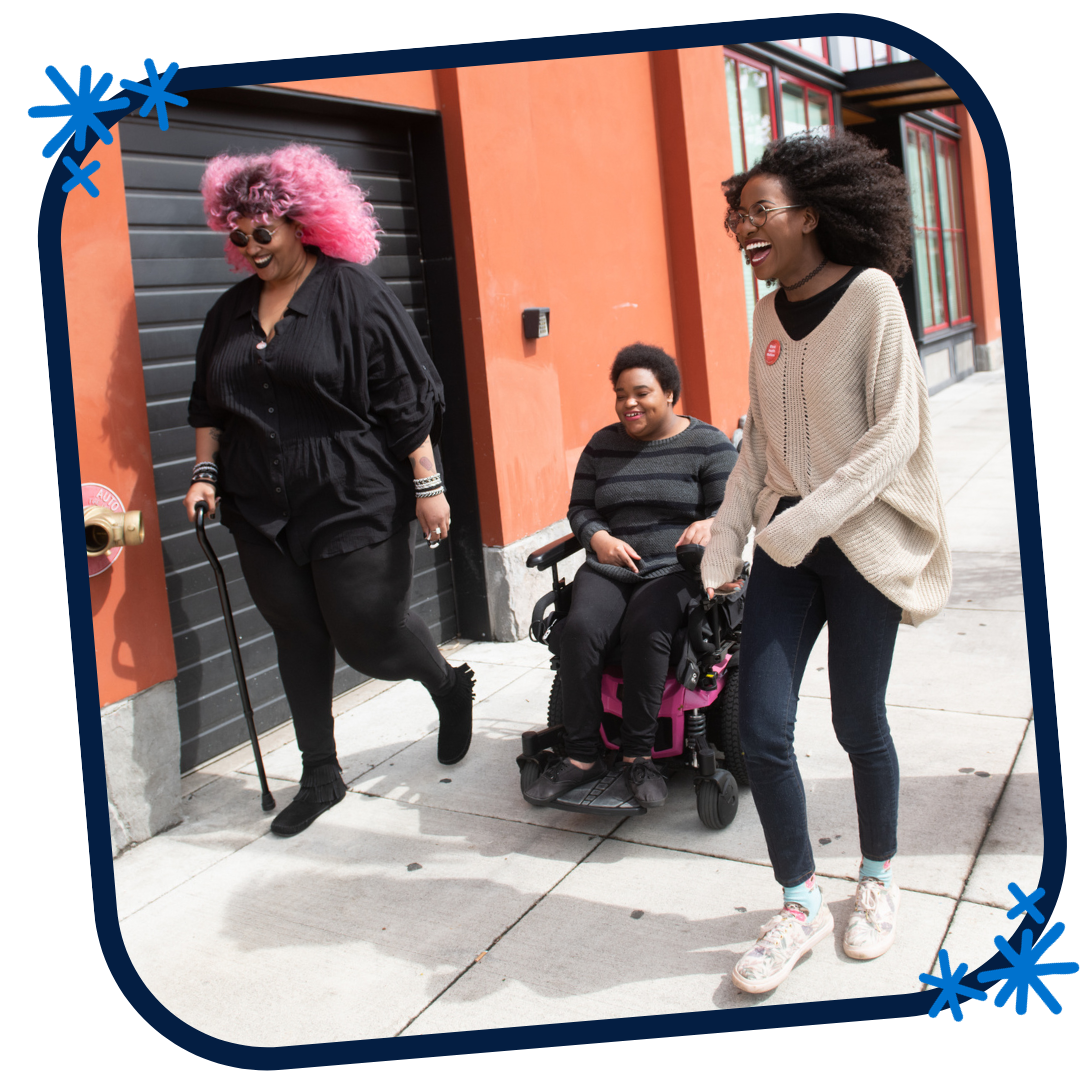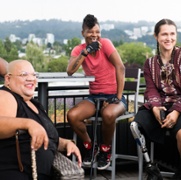Why We Center Equity and Accessibility for Inclusive Events
By Janine Driver (JD), MA | November 9, 2023
Marketing & Communications Coordinator, ETR
In this blog series, ETR experts will share best practices for hosting accessible events and centering equity in convenings. We will begin the series by exploring the importance of event accessibility and its relationship to health equity.
“...access is about turning towards each other and figuring out how to collectively create an environment where everyone, especially those historically excluded, can participate.”
The Power and Possibility of Accessible Spaces
At ETR, we believe in the power and possibility of cultivating accessible spaces, especially in the fight for health equity. As an organization with deep expertise in convening people from around the world for dynamic in-person and virtual events, we are committed to creating learning environments that center the diverse needs of the communities they aim to serve. Accessibility practices can be integrated into many forms of learning environments, including conferences, webinars, organizational gatherings, or staff meetings.

Health and education outcomes are deeply influenced by complex interactions between people and their environments. Among the spheres of influence that impact these outcomes are relationships and networks. When we work to create intentional spaces for people to learn in community with one another, we can better support them in building the relationships and networks they need to thrive.
In this context, we use the word accessibility to describe the degree to which a person can fully participate in an event, or learning environment, as the most authentic version of themselves. This is important because research tells us that when people can show up as their full selves, they are better equipped to learn.
We All Have Access Needs
Accessibility is often framed as only relevant to people who identify as Disabled or people who have a disability. When in reality, regardless of ability status, we all have access needs.
We each hold a specific set of social identities, including but not limited to gender, sexuality, race, ethnicity, socioeconomic status, (dis)ability, religion, education, and beyond. Those identities intersect to create specific lived experiences that are unique to every person.
When we are shaping environments for people to learn in, including events, it’s vital that we consider how those intersecting identities shape what needs learners may have and how they might differ from each other.
For example, one person at your event may have access needs related to their gender, while another may have safety needs related to their citizenship status. Whether or not these needs are met will dictate the ability to which they can actively and authentically learn in the environment you are creating.
Whose Needs Are Being Prioritized?
Because of systems of power and oppression, the needs of people who hold identities that have been historically marginalized often go unmet. This can lead to further marginalization and replications of oppression at the local and community level.
Further, dominant groups in society shape cultural norms. This means that if unchecked, our event spaces will advantage people who belong to those dominant groups and disadvantage people who do not.
For example, in the United States, it is assumed that most people speak English, so the majority of events are presented in that language. But what if you are an attendee whose first or primary language is not English? Attending that event is going to be a completely different experience for you.
If we want every attendee to have the same capacity to learn, we have to understand what they need to participate fully. Our awareness of the needs that attendees may have based on their identities can help us create safer environments for people to learn in.

Start By Asking!
Understanding and working to meet the needs of people attending events is an important part of health equity work. When we host strategic convenings, we must think critically about who will be in attendance and how we can work to create the most accessible container for them to learn.
It’s important to acknowledge that you won’t be able to predict every accessibility need. Because we each hold those unique intersecting identities, we can’t know exactly what it feels like to be someone with identities that differ from our own. We each hold internal biases based on our identities that can cause us to make inaccurate assumptions about other groups.
Instead of making assumptions about what your attendees may need, first start by connecting with them directly. By centering their voices throughout the design of your event, you can ensure that you both understand and are prepared to meet their access needs. And, when they tell you what they need, believe them!
What’s Next?
You may find yourself at the end of this piece wondering what to do next. Don’t worry, we’ve got you covered! In the next blog of this series, we will explore specific strategies to create more accessible event environments. But until then, remember that accessibility is not a destination; it is a tool to move us closer to equity. Keep working to understand what your community needs by working with them directly.
Janine Driver (JD), she/they, MA, is a Marketing and Communications Coordinator at ETR. They have over a decade of experience working with non-profits across sectors to develop, strategically promote, and implement culturally responsive events and marketing practices. Janine believes in the power and possibility of co-creating learning environments and marketing materials that are intentionally curated around the needs of the communities they aim to serve.
They center the values of change, collaboration, equity, and care in their work. Janine is committed to leveraging marketing and events as a vehicle to advance health equity and get us all closer to liberation. Janine has multiple degrees from Eastern Michigan University, where their research centered on meeting the needs of college-aged youth across many intersecting identities. Janine is a white, queer, non-binary, single-mom, and emergent strategist. They can be reached at janine.driver@etr.org.
Images are sourced from Affect's Disabled And Here project, a disability-led effort to provide free & inclusive stock images from their own perspective, with photos and illustrations celebrating disabled Black, Indigenous, and people of color (BIPOC).





